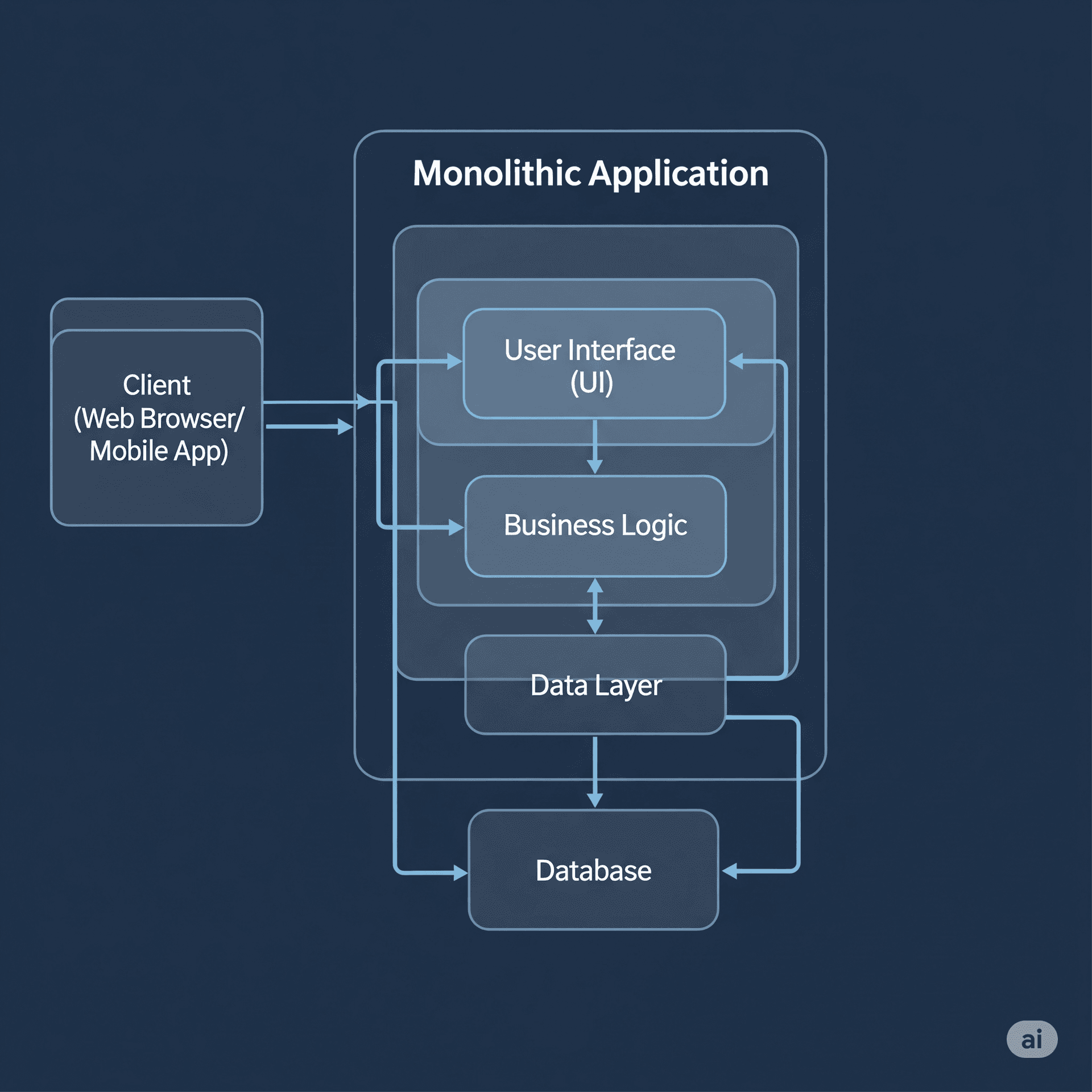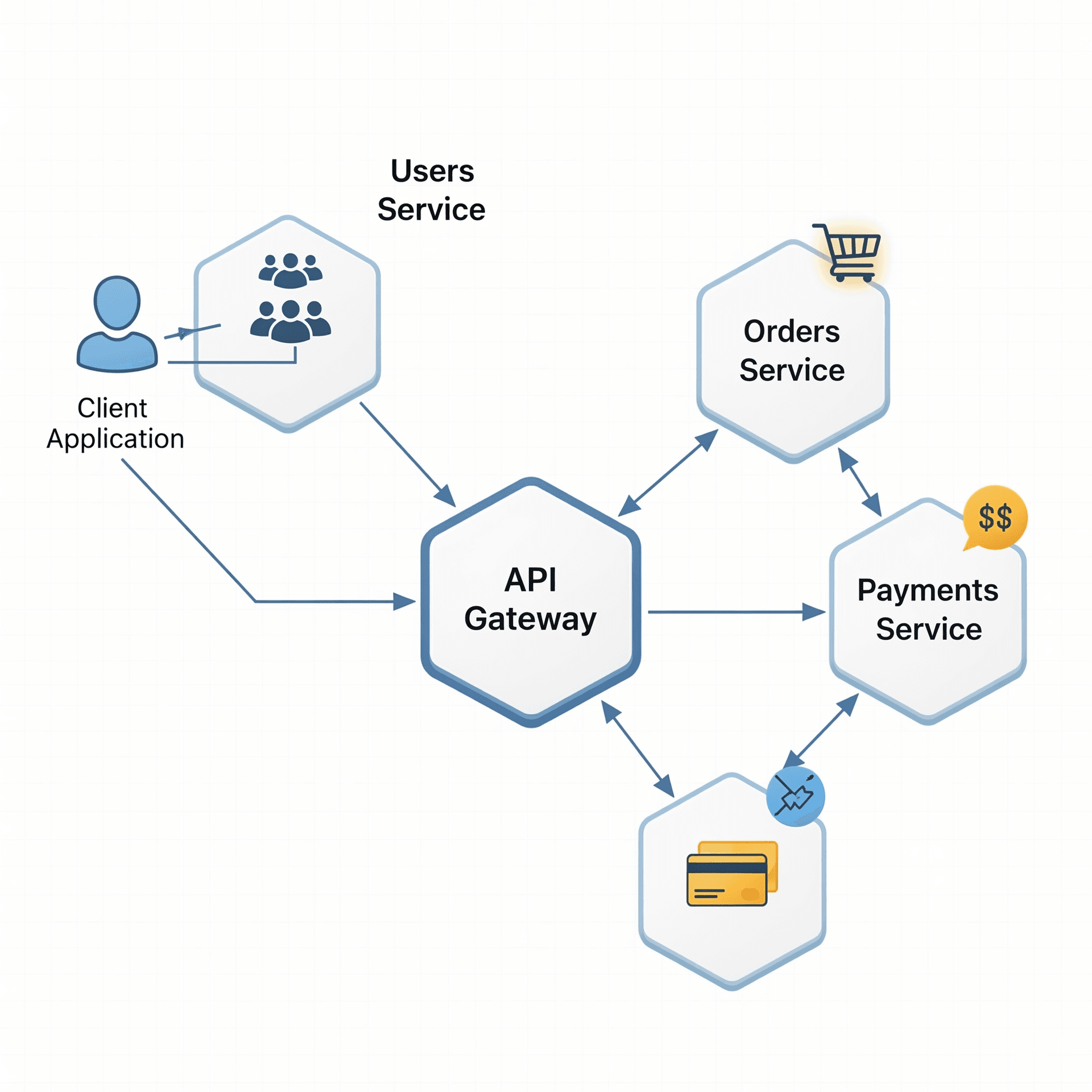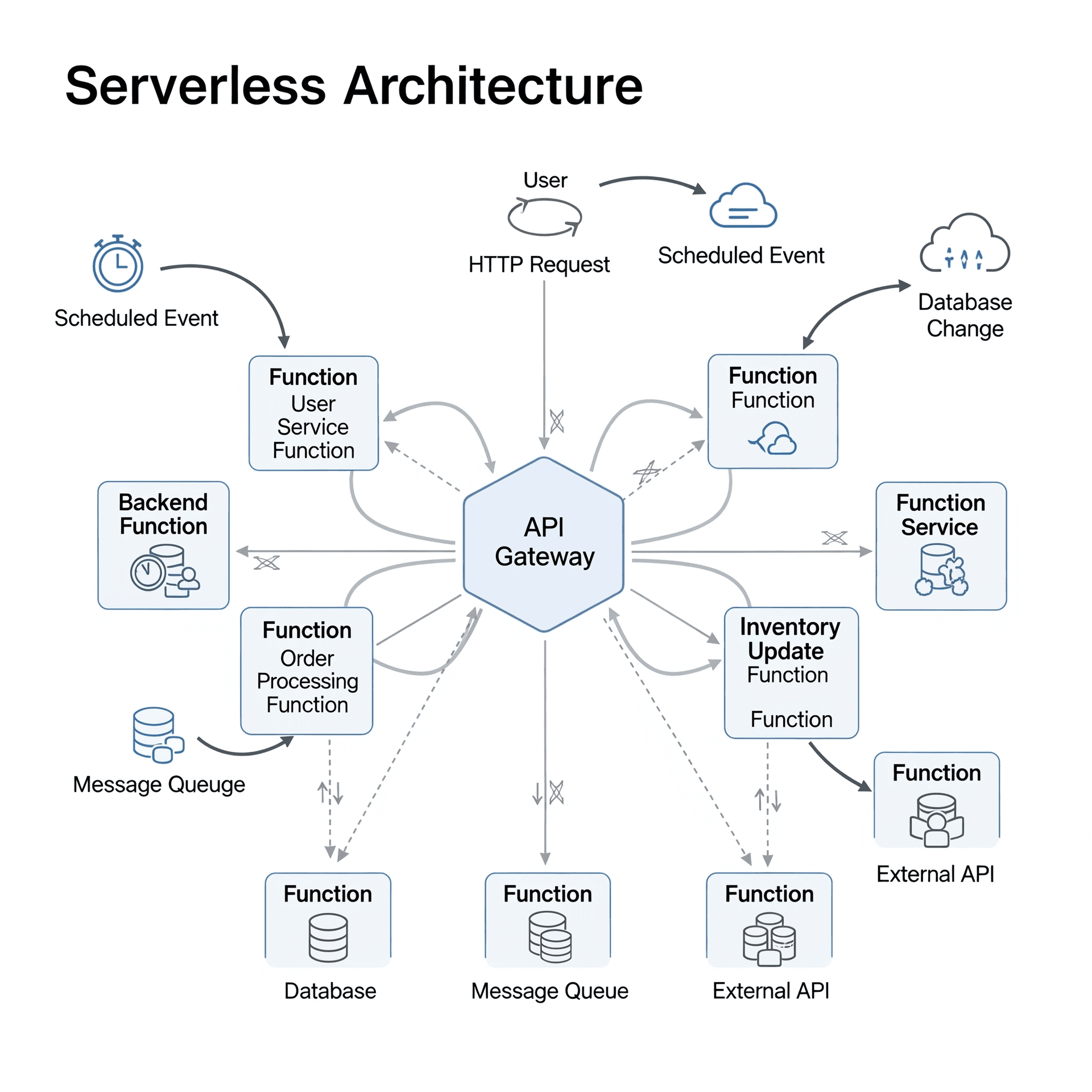Choosing the right architectural pattern is one of the most critical decisions in modern software development. It has a lasting impact on your application's scalability, maintainability, development speed, and cost. The three dominant paradigms today are the traditional Monolith, the flexible Microservices, and the cloud-native Serverless approach.
There is no single "best" choice; each has distinct strengths and weaknesses. The optimal decision depends on a careful evaluation of your project's scope, team structure, scalability requirements, and business goals.This guide will break down each architecture to help you make an informed decision.
1. Monolithic Architecture: The Unified Foundation
A monolithic architecture is the traditional approach where an application is built as a single, indivisible unit. All components—the user interface, business logic, and data access layer—are tightly coupled within a single codebase and deployed as one entity.

When to Choose a Monolith:
- Startups and MVPs: When your primary goal is speed-to-market and validating a business idea, the simplicity of a monolith is a major advantage.
- Small, Simple Applications: For applications with limited business logic and predictable scaling needs, a monolith is often the most efficient and cost-effective choice.
- Small Development Teams: A single codebase is easier for a small team to manage, test, and deploy without the complexities of a distributed system.
| Pros | Cons |
|---|---|
| Simplicity: Easier to develop, test, and deploy initially. | Poor Scalability: The entire application must be scaled together, which is inefficient and costly. |
| Faster Initial Development: A unified codebase allows for rapid iteration. | Lack of Flexibility: Changes to one component can affect the entire system, increasing risk. |
| Lower Initial Cost: Requires less initial investment in infrastructure and DevOps. | Technology Lock-in: The entire application is tied to a single technology stack. |
2. Microservices Architecture: The Power of Independence
Microservices architecture breaks a large application into a collection of smaller, independent, and loosely coupled services. Each service is responsible for a specific business function, manages its own database, and communicates with other services through well-defined APIs. This approach allows for greater flexibility and scalability.

When to Choose Microservices:
- Large, Complex Applications: For systems with multiple, complex business domains, microservices provide better modularity and maintainability.
- High Scalability Requirements: When different parts of your application need to scale independently, microservices are highly efficient.
- Large, Distributed Teams: Autonomous teams can develop, deploy, and manage their own services independently, increasing productivity.
| Pros | Cons |
|---|---|
| Independent Scalability: Scale individual services based on demand, optimizing resource usage. | High Complexity: Managing a distributed system introduces significant operational and developmental overhead. |
| Improved Fault Isolation: Failure in one service doesn't necessarily bring down the entire application. | Higher Initial Cost: Requires more investment in DevOps, infrastructure, and monitoring. |
| Technology Flexibility: Teams can choose the best technology stack for each individual service. | Data Consistency Challenges: Maintaining data consistency across multiple distributed databases can be complex. |
3. Serverless Architecture: The Future of Cloud-Native
Serverless architecture, also known as Function-as-a-Service (FaaS), is an approach where the cloud provider dynamically manages the allocation and provisioning of servers. Developers write and deploy code in the form of individual functions that are triggered by specific events (like an API request or a database change).

When to Choose Serverless:
- Event-Driven Applications: Ideal for tasks that respond to specific triggers, such as image processing after an upload, running scheduled jobs, or handling API requests.
- Applications with Variable or Unpredictable Workloads: The automatic, on-demand scaling makes it extremely cost-effective for applications with sporadic traffic.
- Rapid Prototyping and MVPs: Accelerates development by abstracting away all infrastructure management, allowing developers to focus purely on application logic.
| Pros | Cons |
|---|---|
| No Server Management: The cloud provider handles all infrastructure, reducing operational overhead. | Vendor Lock-in: Your functions are often tied to the specific services and limitations of a particular cloud provider. |
| Pay-Per-Use Cost Model: Extremely cost-effective, as you only pay for the exact execution time and resources used. | "Cold Start" Latency: There can be a delay in function execution after periods of inactivity. |
| Automatic and Infinite Scaling: The platform automatically scales to handle any load, from zero to thousands of requests per second. | Debugging and Testing Complexity: It can be difficult to replicate the cloud environment for local testing and debugging. |
Conclusion: Making the Right Choice
The decision between monolithic, microservices, and serverless architecture is a strategic one with no one-size-fits-all answer. The "right" choice is the one that best aligns with your immediate needs while providing a viable path for future growth.
- Start with a Monolith if you need to launch quickly and have a small team. Many successful applications began as monoliths and evolved later.
- Choose Microservices for large, complex systems where scalability, flexibility, and team autonomy are critical priorities.
- Leverage Serverless for event-driven tasks and applications with unpredictable traffic to optimize costs and developer productivity.
Often, the best solution is a hybrid approach, such as breaking down a monolith into microservices over time or using serverless functions to handle specific, bursty workloads within a larger microservices architecture. By understanding the fundamental trade-offs, you can architect a system that is not only powerful and efficient today but also resilient and adaptable for the future.